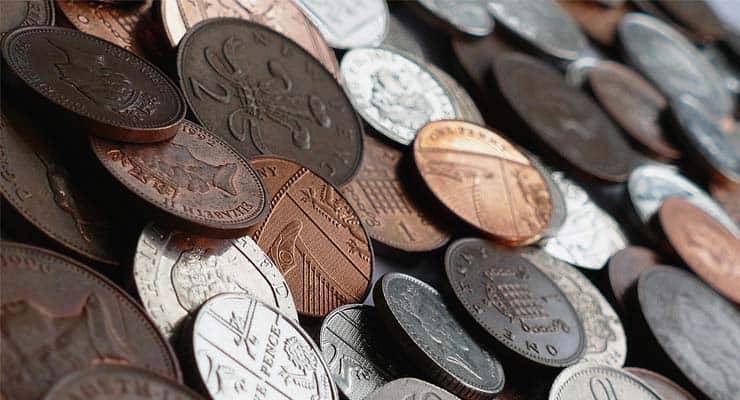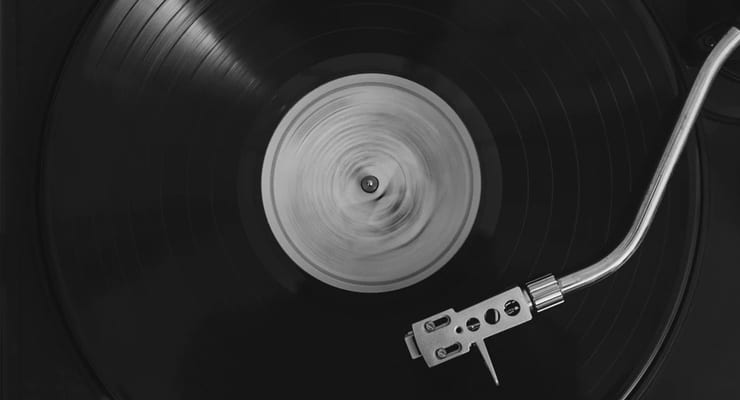41 Interesting Facts About Money: That Might Shock You in 2025

SovereignBoss adheres to a stringent code of editorial guidelines, but some articles may feature partner references. Here is an explanation for how we make money.
- The Bank of England has been issuing banknotes since 1694, the pound (£) symbol originates from the Latin word 'libra', and the Royal Mint, responsible for producing all the country's coins, was established over 1,100 years ago.
- The concept of money in the UK has evolved from commodity money, such as precious metals and livestock, to representative money like banknotes and coins, and now to digital money, such as online banking and cryptocurrency.
- Some of the most rare and valuable British coins include the 1933 Penny, the 1703 Queen Anne Silver Vigo Five Guineas, and the 1819 George III Sovereign.
- Different cultures perceive and utilize money diversely, with some cultures prioritizing saving and investing, others focusing on living for the moment and spending, and some using money as a means for social status and power.
- The British pound is the oldest surviving currency in the world, it was once made of sterling silver which is how it got its name 'pound sterling', and the Bank of England was the first institution to begin regular issuance of banknotes in 1695.
In This Article, You Will Discover:
It's a fact that money is a topic that many people have strong opinions on. Some love it, and some hate it.
Money can be the root of all evil or the source of happiness and prosperity.
But what are some facts about money? Is there anything you didn't know about this abstract concept?
Here are 42 interesting facts about money that'll surprise you.
#1. UK Coins Can Be Combined to Reveal a Secret Shield Design
UK coins can be stacked so that they form the shape of the shield design from the Royal Coat of Arms1.

#2. Global Debt Is Now at a Record High
Global debt has hit a record $300 trillion2. Globally, that amounts to about £30,300 per person.

#3. Our Bank Notes Aren't Made From Trees
Trees aren't cut down to make our bank notes. They're made from cotton and linen fibres3.

#4. Star Wars, Pokémon, & Frozen Coins Are Legal Tenders on the Island of Niue
Niue4 is a small island country located in the South Pacific Ocean.
It has just one store, and it accepts all three of these coins as payment for goods.

#5. The English £5 Note Can Play Vinyl Records
This is the first banknote to be printed on polymer, which means it can play vinyl records.

#6. The English £5 Note Contains Traces of Animal Fat
The English £50 note contains traces of grease, the rendered fat from animals such as cows or pigs.

#7. North Korea Is the Largest Counterfeiter of US Dollars
North Korea is the world's largest counterfeiter5 of US dollars.
Estimates say they have produced more than $45 million worth of fake currency, making them a serious threat to global stability and security.

#8. Emerich Juettner Was a Pro at Counterfeiting
German forger Emerich Juettner was one of the most famous counterfeiters in history.
He produced thousands of counterfeit $1 bills and eluded the Secret Service for over a decade6.

#9. You Can Make Clean Your Coins With Coca-Cola
You can make your grubby coins look brand new again by soaking them in Coca-Cola. The acid from the drink will cause a chemical reaction that gets rid of the grimy tarnish often found on coins.

#10. Money Is Recycled When Worn Out
Recycling is a crucial part of modern life, but it's even more critical for money.
Money has to be recycled every 18 months or so because the ink starts to wear off from handling and contact with other pieces of paper.

#11. Money Is Dirty
Paper money and coins are a breeding ground for bacteria.
On average any form of money is contaminated by over 19 kinds of bacteria7.

#12. Germans Used Money as Wallpaper to Stay Warm
During the First World War, Germans used paper money as wallpaper8 to help keep their homes warm.
They would tear up pieces of banknotes and cover windows with them for insulation.

#13. Only 4% Of the World's Currency Is Physical Money
Most of the world's money is digital. We use debit cards and online banking systems to purchase most of our goods and services.

#14. The Ink Used to Print Money Is High Tech
The ink used to print money is high-tech. It contains metal and polymer particles that most counterfeiters can't detect, which helps maintain the integrity of our currency.

#15. Money Engravers Are Extremely Skilled
Money engravers are skilled craftsmen who need to be able to interpret the complex designs of banknotes.
They can't just copy them; they have to create something original that's true to the original design.

#16. Pennies in Your Garden Deter Pests
Pests like snails and slugs love to eat your plants, but pennies can deter them9.
The copper in the coins repels these pests because they don't like the bitter taste.

#17. A Penny Costs More to Manufacture Than It's Worth
A penny costs more to produce than the coin is worth10, which means it's constantly being created and then recycled.
The metal in a single penny has over one cent worth of value.

#18. The Romans Were the First to Stamp the Image of a Living Person on a Coin
Emperor Gaius Julius Caesar Augustus was the first to have his likeness stamped on a coin.

#19: The Study or Collection of Money Is Called "Numismatics"
The study or collection of coins and banknotes is called numismatics. Numismatics has been going on for centuries.

#20. The First Paper Money Was Made in China Over 1,000 Years Ago
The first paper money was made in China over 1000 years ago11.
Known as "flying cash," this form of currency could be folded or cut up into small pieces for easy transportation and use - perfect if you're on the go.

#21. Some Countries Share a Currency
In some cases, two or more countries share a currency. For example, the Euro is used in seventeen European Union member states and five other neighbouring nations.

#22. North Europeans Are the World's Most Avid Card Users
Card payments are the preferred method of payment for goods and services in key North European countries such as Denmark, Norway and Sweden12.
According to statistics, Sweden's physical money payments accounted for less than 1% of the country's total payment value in 2021.

#23. The Country With the Worst Inflation in the World Is Zimbabwe
Zimbabwe experienced hyperinflation13, which meant that its currency was worth so little that it was essentially worthless.
Despite the introduction of a new local currency in 2018, the inflation rate increased by 255% in 2019 and further still in 2020, reaching an astonishing 558%14.

#24. Tea Bricks Were Used as Money in Siberia Until the WW2
In the 1800s15, tea bricks were used as money in Eastern Siberia.
These bricks would be traded for other goods and services only - they weren't legal tender.

#25. Queen Elizabeth II Held the Record for Appearing on More Currency Than Any Other Person
Queen Elizabeth II appeared on more currencies than any other person.
She was featured on the 50-cent coin in many countries and had her face printed on millions of banknotes.

#26. Over 180 Different Currencies Are Used Around the World Today
There are over 180 different currencies used around the world today16.
In other words, you need to know what currency is being accepted in a country before deciding on where you want to go.

#27. Early Romans Used Salt as a Form of Money
Early Romans used salt as a form of money. They would trade it for items they needed or wanted, and the word "salary" actually comes from this practice.

#28. The First Coins Were Made About 2,500 Years Ago
The first coins were made around 2500 years ago17 and used by the Lydian civilization in Turkey.
There are many theories as to why they started using money. One theory is that these coins served a ceremonial function.

#29. Pablo Escobar Had so Much Money Lying Around That Rats Ate Approximately £1 Billion
Pablo Escobar was a Colombian drug lord who had so much money that he couldn't spend it all.
When the DEA raided his house, they found £200 million in cash alongside thousands of shopping bags full of clothes and shoes.
#30. The Largest Denomination Ever Printed Was in Hungary in 1946
The largest denomination ever printed was in Hungary in 194618 and was a 100 quintillion pengo banknote.

#31. The Word "Cash" Originated in Ancient China
The word "cash," as in currency, originated from ancient China.
They would often barter for goods and services using small copper coins known as cash or kai (which was short for the old Chinese words meaning "to scrape together").

#32. The Word "Cent" Derives From Latin
When referring to a coin or 100th of a unit, the word cent is derived from the Latin word "centum." In other words, it's worth one-hundredth of what something costs.

#33. The Term "Cash Cow" Originated From Early Forms of Currency in the Form of Livestock
The term "cash cow" actually originated from early forms of currency in the form of livestock.
For example, if someone had a goat that gave milk, they would say it was their cash cow because they could sell its milk and earn money.

#34. Sea Shells Were Once Commonly Used as Money in Many Parts of the World
Seashells were once commonly used as money in many parts of the world, including India.
The earliest recorded use of shell currency was by traders on the island of Yap19.

#35. The Average Adult Has Between 1 & 5 Credit Cards
The average adult has 3 credit card accounts20.
The UK had 59 million credit cards in circulation in February 2022.

#36. Walter Cavanagh Has More Than 13,000 Credit Cards
Walter Cavanagh is a Guinness World Record holder who has more than 13,000 credit cards. He's been collecting them since the early 1970s, and they're all different colors!

#37. 95% Of the Notes Printed Each Year Replace Those Already in Circulation
Only around 5% of the notes printed each year are brand new. The rest replace those already in circulation.

#38. Paper Bills Are Made of 25% Linen & 75% Cotton
Bill paper is made of 25% linen and 75% cotton. The Bureau of Engraving & Printing21, which produces the notes, uses cellulose fibres to create this solid yet flexible material.

#39. Ridges on Coins Have a Purpose
Ridges on coins have a purpose, and it's not to make them more accessible for people to hold. This design feature was added to discourage coin clipping22.
#40. 85% To 95% Of Paper Money Contains Traces of Cocaine
85% to 95% of paper money contains traces of cocaine23.
In its early days, US currency was made with a mix of cotton and linen from the southern United States, where drugs were grown.

#41. 7 Tons of Ink Is Used to Print Money Every Day
Every day, about seven tons of ink is used to print mo



